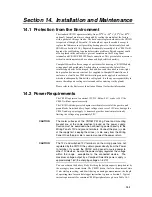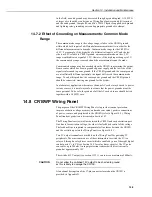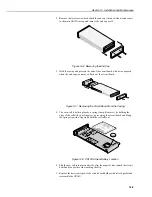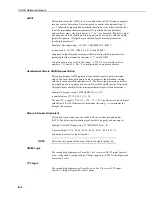
CR10X Reference Manual
A-4
summaries to Final Storage takes place when the Output Flag has been set by a
Program Control Instruction.
Parameter
Used in conjunction with CR10X Program Instructions, parameters are numbers
or codes which are entered to specify exactly what a given instruction is to do.
Once the instruction number has been entered in a Program Table, the CR10X
prompts for the parameters by displaying the parameter number in the ID Field of
the display.
Print Device
Any device capable of receiving data when enabled by pin 6 (the PE line) in a
receive-only mode. Printers, ‘dumb’ terminals, and computers in a terminal mode
are in this category.
Print Peripheral
See Print Device.
Processing Instructions
These instructions allow you to further process input data values and return the
result to Input Storage where it can be accessed for output processing. Arithmetic
and transcendental functions are included in these Instructions.
Program Control Instructions
These instructions are used to modify the sequence of execution of Instructions
contained in Program Tables; also used to set or clear flags.
Program Table
That portion of memory allocated for storing programs consisting of a sequence of
user instructions which control data acquisition, processing and output to Final
Storage. Programming can be separated into two tables, each having its own user-
entered Execution Interval. A third table is available for programming subroutines
which may be called by instructions in Tables 1 or 2. The *1 and *2 Modes are
used to access Tables 1 and 2. The *3 Mode is used to access Subroutine Table 3.
The length of the tables is constrained only by the total memory available for
programming. Tables 1 and 2 have independent execution intervals. Table 1
execution has the higher priority; it may interrupt Table 2.
Ring Line (Pin 3)
A line pulled high by an external device to alert the CR10X.
Sample Rate
The rate at which measurements are made. The measurement sample rate is
primarily of interest when considering the effect of time skew (i.e. how close in
time a series of measurements are). The maximum sample rates are the rates at
which measurements are made when initiated by a single instruction with multiple
repetitions.
















































